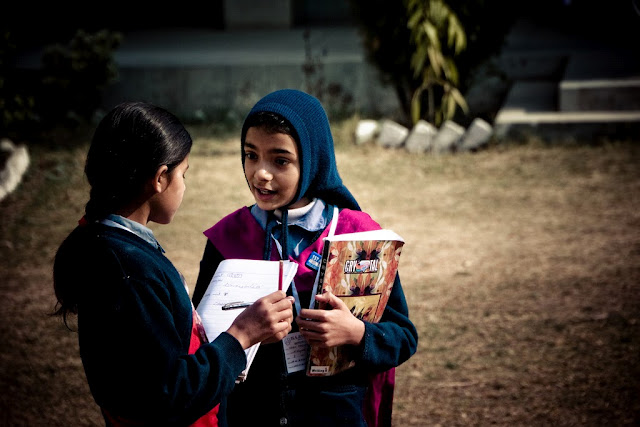Pakistan is at a major demographic crossroads. With a youth-heavy population of some 180 million and an annual population growth rate around 2 percent,
the country’s population is projected to swell to roughly 335 million by mid-century. Such explosive growth raises major questions about Pakistan’s future, from looming food and
water scarcity, to yawning inequalities in the nation’s
educational and
economic systems. Some warn that these problems
threaten to drive a new generation of disaffected Pakistani youth toward political and religious radicalization.
Recently, I asked a number of leading Pakistani demographers visiting the Wilson Center how their country could best achieve more sustainable population growth rates and effectively harness the economic potential of Pakistani youth.
Educate Girls
Zeba Sathar, Pakistan country director for the Population Council in Islamabad, told me empowering girls through education represents one of the most important means of reducing the total fertility rate, which currently stands at four. “When children are educated—particularly when girls are educated—they take care of their fertility and their family size themselves,” Sathar said.
Yet securing educational opportunity for Pakistani girls has often been an uphill battle, largely due to entrenched social norms. Yasmeen Sabeeh Qazi, Karachi-based senior country adviser for the David and Lucile Packard Foundation’s Population Program in Pakistan, pointed out that a traditional preference for male children in Pakistani society has meant girls do not often receive the same level of family resources as males. This phenomenon has historically fed gender inequality, she said.
“Since boys are preferred, girls are not given the same kind of attention and nutrition, especially in the poorer and less-educated families,” Qazi told me. “But as the education level goes up, you see that this divide starts narrowing.” For Qazi, one of the keys to heightening educational access for girls is to increase both the quantity and quality of schools in rural districts, where two-thirds of Pakistanis live.
Decentralize Family Planning Services
Others I spoke with emphasized improving access to reproductive health and family planning services in rural and urban areas. The federal government’s relatively recent move to delegate operational authority for family planning services to the provincial or district level has encouraged many, such as Dr. Tufail Muhammad with the Pakistan Pediatric Association’s Child Rights & Abuse Committee in Peshawar.
Muhammad said the ongoing decentralization—which he described as “a major paradigm shift”—is meant to increase ownership of population planning policies at the local level, and therefore lead to more effective implementation because “the responsibility will be directly with the provincial government.” Once capacity is established at the local level to design and implement those policies, Muhammad added, “supervisors, administrators, and policymakers will be very close to [family planning] services.”
Manage the “Youth Bulge”
Yet despite the fact that both the public and private sectors are taking steps to address Pakistan’s growth issues, the population crunch will intensify before it potentially eases. Even assuming that greater educational opportunity for girls and increased local control over family planning services help drop Pakistan’s total fertility rate, the sheer size of the current youth bulge—two-thirds of the country’s population is under age 30—means population issues will inform every aspect of Pakistani society for decades to come.
In discussing the current state of Pakistan’s education system, some speakers also asserted that the influence of madrassas, or religious schools, over the student-aged population has often been overstated. Shahid Javed Burki, Pakistan’s former finance member and recent senior scholar at the Wilson Center, said during the panel discussion that inaccurate enrollment estimates created “the impression that the system is now dominated” by those institutions. He noted that more recent figures place madrassa enrollment at just five percent of the total student population.
With a majority of Pakistani students enrolled in regular public schools, he insisted that “public policy in Pakistan has to focus on public education” in order to prevent those students from slipping through the cracks. The problem, he added, was that “the education that they are receiving is pretty bad. It really does not prepare them to be active participants in the workforce and contribute to the economic development of the country.”
Still, most of the experts sounded optimistic about Pakistan’s potential to mitigate some of the adverse effects associated with the near-doubling of the country’s population during the next 40 years. By starting to more openly address an issue that the government and the powerful Pakistani media have long preferred to ignore, they seemed to agree the country is taking a big step in dealing head-on with its looming demographic challenges.
“I don’t look at the Pakistani population as a burden, but rather as an asset,” remarked Burki. “But it has to be managed.”
Photo Credit: “School Girls Talk in Islamabad,” courtesy of flickr user Documentally.
 A Publication of the Stimson Center.
A Publication of the Stimson Center.




